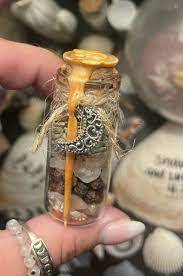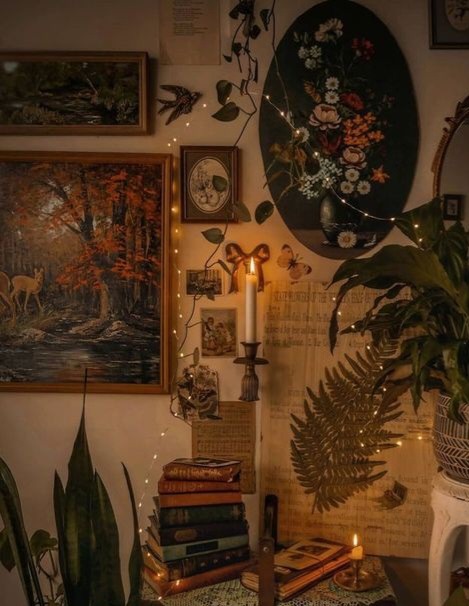I Must Not Give Up
I Must Not Give Up
Dollar Tree put me on suspension because of a robbery/scam. We followed protocol but somehow I still feel like I'm going to get canned. But at only 9.75, come Monday I'll just hit the ground running and start filling out job applications. I already have seen two potentials.
Tomorrow, I will clean the house, do some self-reflecting, and maybe some spell work and enjoy some tea. Maybe some confidence spells and glamours. Also, I will start setting up my interview attire. I must be positive and not give up, there are better things.

More Posts from Kansas-sun-witch and Others










Oh, nah you're good. By all means we're not immune to drama and infighting every group online or offline has that, but why witch hunt each other, when states have begun to do that. I saw something on Insta this morning about it happening in South Carolina.
I miss the good old days of witchblr. Does anybody else remember like we could read whatever we wanted, and we could post about it? And sure, there were people that didn't care of the book or topic. The difference between then and now is that it was a discussion and not a beat down session. And then, people were kind enough to offer other book titles!
Also, we had a clear set of guidelines referring to cultural appropriation, and words or phrases that were frowned upon. Other then that, you want to be a Death Witch, go for it. A Sea Witch, have at it. A Storm Witch, power to ya. The lists goes on. Then, if we were curious about there practice we would ask genuine questions! If the practitioner maybe did something that maybe you didn't like or thought was borderline on the no no list, again you didn't beat them down, it was a discussion.
The ones that couldn't handle having a informal discussion were simply blocked and their comments were deleted. Or in some cases, the post was deleted, which was pretty common, and occasionally remade.
Also, side tangent, we liked the titles of the different witch types, because it was our niche and it was organized. Sure, you don't have to have a title or a certain practice, that's fine. As for me, I like having a title or a type because it keeps me focused on what I want to achieve. Plus, having a title made the witchblr tags so much easier to navigate.

This morning I spent some time with Ra, and I was able to switch on my clairaudient abilities. Using the Bee Tarot I used what is called Hive and Flower spread. Their version of the Celtic Cross Spread. It was an overall positive spread, and any negative stuff that was brought up I am already aware of and in the thick of things. Things will get better, I have done it before and I will do it again.
It was also brought up in the cards, I need to get back on the spiritual track as well. This was brought up by the Delphic Bee (Hierophant) and the Star. Which is true. I definitely have lost my zeal I used to have back in the day.
I'm also getting back in the habit of journaling again. It is helping me keep my mind off of too many things.



Motivation and Success Spell Jar
Cleanse area and jar
Add Sea Salt to charge
Rosemary for motivation
Sage for Protection
Cinnamon for Good Luck
Ginger for success and motivation
Red pepper flakes to get the job done
Green Adventurine for success
Light yellow candle with intent.
Hold over jar – wax to seal – As you seal jar
Chant:
“Motivation come to me, Inspire me.
Let success blossom within me”
Incense Correspondences

Acacia: Divination, Knowledge, Love, Vision
Amber: love, comfort, happiness, healing
Angelica: Protection, harmony, integration, insight and understanding, stability, meditation
Anise: emotional balance, banishing and protection
Apple: Friendship, Happiness, Lust, Love
Basil: luck, success, money, mental clarity, cheerfulness, concentration
Bay: Purification, Power, Power, Banishing
Bayberry: Prosperity, Control, Happiness
Benzoin: Emotional Balance, Business,
Bergamot: Money, prosperity, Protection, Confidence, Strength, Courage
Cardamom: Confidence, Courage, Mental clarity, Enthusiasm, Motivation
Carnation: Healing, Love, Lust, Protection, Strength
Cedar: Purification
Cedarwood: Purification, Grounding, Protection, Money, Balance, Insight, Wisdom
Chamomile: Harmony, Calm, Spiritual, Inner peace
Cinnamon: Wealth, Success, Prosperity, Aphrodisiac, Stimulation, Healing
Citronella: Cleansing, Healing, Warding
Clove: Business success, Wealth, Eases fears, Pain relief
Copal: Love, purification, protection, exorcism
Cypress: Self-assurance, Confidence, Strength, Concentration, Eases anxiety and stress, Physical vitality, Willpower, Divination, Astral projection
Dragon's Blood: Protection, Exorcism, Purification, Courage, Magickal power
Eucalyptus: Healing, Purification, Protection
Frankincense: Consecration, Spirituality, Astral strength, Courage, Exorcism, Dedication
Gardenia: Peace and love
Ginger: Stability, Wealth, Lust, Sex
Hibiscus: Divination,Love, Lust
Honeysuckle: Luck, Good fortune, Happiness, Friendship, Healing
Hyacinth: New beginnings, Happiness, Protection
Jasmine: Love, Sensuality, Money, Dreams, Purification, Wisdom
Juniper: Calming, Protection, Healing
Juniper Berry: Wisdom, Exorcism
Lavender: Peace, Tranquility, Sleep, Cleansing, Relaxation
Lemon: Purification, Healing
Lemongrass: Purification, Mental Clarity, Hex and Curse Breaking
Lilac: Warding, Clairvoyance, Peace
Lotus: Spirituality, Happiness, Meditation, Wisdom
Magnolia: Beauty, Purification, Spring
Musk: Lust, Sexuality, Prosperity, Courage
Myrrh: Divination, Spirituality, Wisdom, Psychic power, Visions, Healing, Consecration, Exorcism
Opium: Lucid and Prophetic dreams
Orange: Love, Luck, Money, Divination
Orange Blossom: Luck, New Beginnings
Passionflower: Sensuality, Friendship, Calm
Patchouli: Growth, Progression, Money, Love, Sensuality
Peppermint: Mental stimulant, Exorcism, Healing
Pine: Cleansing, Insight, Grounding, Strength, Exorcism, Healing
Rose: Love, House blessing, Fertility, Healing
Rose Geranium: Courage, Protection
Rosemary: Healing
Sage: Purification, Cleansing, Clarity, Exorcism
Sandalwood: Spirituality, Visions, Peace, Serenity, Healing, Protection, Astral projection
Strawberry: Love, Friendship, Luck
Sweet Pea: Friendship, Love, Courage
Vanilla: Memory, Lust, Mental alertness
Vetivert: Money, Peace, Love
Violet: Psychic visions, Wisdom, Luck, Love, Protection, Healing
Wormwood: Astral projections, Helps to enhance the mind faculties
Yarrow: Courage, Exorcism
Ylang Ylang: Happiness, Love, Harmony
source1: The Complete Book of Incense, Oils and Brews by Scott Cunningham
source 2: https://witchesofthecraft.com/2015/06/05/incense-their-magickal-correspondences/
bring back tumblr ask culture let me. bother you with questions and statements






ANUBIS



WHO IS HE?
Anubis, also known as Inpu and Anpu in Ancient Egyptian mythology, is the god of funerary rites, protector of graves, and guide to the Underworld, in Ancient Egyptian mythology, usually depicted as a canine or a man with a canine head.
BASIC INFO:
Appearance: in Egyptian mythology, Anubis is typically depicted as a jackal-headed deity or a man with the head of a jackal. He is often depicted wearing a loincloth and holding a flail or a pair of scales. The jackal head represents Anubis' role as the guide to the Underworld, while the flail and scales represent his role as the judge of the dead. Some later representations of Anubis also show him holding a scepter, which is a staff symbolizing power and authority.
Personality: he is often portrayed as a serious and mysterious figure. He is known as the guide and guardian of the Underworld, and he is responsible for helping the dead on their journey to the afterlife. Anubis is also depicted as just and fair, using his scales to weigh the heart of the deceased against the Feather of Ma’at to determine their worthiness for the afterlife. Despite his association with death and the Underworld, Anubis is also seen as a protector and guide for the living, and he is believed to help those who call upon him for protection and guidance.
Symbols: flail, crook, sceptre, and mummy gauze
God of: the dead, mummification, embalming, the afterlife, and tombs
Culture: Egyptian
Plants and trees: star anise, benzoin, cloves, cardamom, frankincense, myrrh, rosemary, cypress, pomegranate, cedarwood, blue lotus, juniper, lilies, and black roses.
Crystals: black obsidian, onyx, jet, garnet, smoky quartz, babingtonite, augite, alabandite, agate geode, petrified palmwood, brochantite, agate, labradorite, trolleite, melanite, dendritic opal, larvikite, biotite, fire opal, merlinite, bloodstone, hematite, and black tourmaline.
Animals: jackal, dog, flies, scarab beetle, Ibis bird, and snake
Incense: cinnamon, sage, frankincense, cedarwood, pomegranate, myrrh, copal, dragons blood, and vanilla
Practices: death witchcraft, necromancy, protection, death magick, guidance (especially through transitions), shadow work, funerary rites, cremation rituals, death positive activism, funeral service provision, divination, and ancestor worship
Colours: black, gold, green, and red
Number: 13
Zodiac: Scorpio
Tarot: Death
Planets: Pluto
Days: Monday, Thoth (Thuty) Festival, Opening of the Mouth ceremony, Festival of the Divine Birth, Nile Flood Festival, Festival of the Dead, and Festival of the Jackal
Parents: Ra (his father originally), Hesat (mother), Bastet (sometimes referred to as his mother), Osiris (his father in later stories), and Isis (his mother in later stories).
Siblings: Horus, Babi, Sopdet, Wepwawet, and Bata
Partner: Anput and Nephthys
Children: Kebechet
MISC:
• Flail: the flail is associated with Anubis because it was believed to have been used by him in the process of mummification. In ancient Egyptian mythology, the flail was a tool used to separate the body of the deceased from its wrappings. It was also associated with the idea of balance and justice, as the flail had two heads that were believed to represent the balance of life and death. In some depictions, Anubis is shown holding a flail in his hands as a symbol of his role as a judge of the dead.
• Crook: it was a staff with a curved end and was used by shepherds to guide their flocks. In Egyptian mythology, the crook was associated with the god Osiris and later with Anubis as well. It was believed to represent Anubis' role as a shepherd of souls, guiding the deceased through the afterlife and protecting them from danger. Additionally, the crook was seen as a symbol of authority and power, as the pharaohs were often depicted carrying one as a sign of their divine rule.
• Sceptre: in ancient Egypt, a sceptre was a staff that was carried by the pharaohs and gods to symbolize their power and authority. For Anubis, his sceptre was known as the Pesesh-kef Sceptre, and it represented his role as a guide and protector of the dead. The Pesesh-kef was a symbol of his status as a god and was used to perform rituals and ceremonies related to the afterlife. It was also believed to have healing or magical properties and was sometimes buried with people to protect them on their journey through the afterlife.
• Jackal: Anubis is often depicted with the head of a jackal, which is one of the reasons why jackals are associated with him. Jackals were considered scavengers and were known to be present in the deserts where many Egyptian burials took place. For this reason, they were believed to have been closely associated with death and the afterlife. The jackal was also said to have the ability to navigate the underworld, which further strengthened its association with Anubis, who was considered the guide and protector of the deceased in the afterlife.
• Mummy gauze: the material used to wrap and bind the mummies of the deceased. Anubis, as the god of mummification and the afterlife, was closely associated with the practice of mummification and often depicted holding rolls of mummy gauze as a symbol of his role. In addition, mummy gauze was believed to have magical or protective properties, and some Egyptians would use it as a talisman to keep themselves or their loved ones safe from harm. As a result, mummy gauze became a potent symbol of Anubis' power and connection to the underworld.
• The colour black: often associated with death and the underworld, this is likely because of the dark, fertile soil of the Nile River banks, where many Egyptian burials took place. Anubis, as the god of death and the afterlife, was closely associated with the Underworld and the process of mummification, which required the use of black resin and tar. As a result, the color black became a powerful symbol of Anubis and his domain, and was often used in paintings, carvings, and other representations of the god.
FACTS ABOUT ANUBIS:
• He likes metal music (especially black metal), dark crystal jewelry, gothic style, and dark coloured sports cars.
• In the Egyptian Book of the Dead, it is said that Anubis weighs the heart of the deceased against the Feather of Ma’at to determine their worthiness for the afterlife.
• Anubis was regularly invoked for protection as well as vengeance.
• He helped Iris bring Osiris back from the dead.
• His time of day is dusk.
• Anubis is very caring and kind to his worshipper.
• The name “Anubis” is the Greek form of the Egyptian name “Anpu” which means to decay.
• He is not a demon or evil entity.
• Anubis was said to be the creator of embalming.
• The Greeks associated Anubis with Hermes, the Greek god who guided the dead to the afterlife. The two would be joined together to create Hermanubis, making him more accessible to non-Egyptians.
• A very sweet entity and only wishes to help guide people in the right direction.
• He knows the date of everyone’s death and may be petitioned to reveal it.
• Anubis is one of the oldest Egyptian gods.
• He is represented by the colour black.
HOW TO INVOKE ANUBIS:
Connect with Anubis as you would any other deity—with profound respect and gratitude. He selects devotees who are willing to face their shadows, and who aren’t afraid of spirts and death. Come to him with a pure heart and pure intentions.
To work with him, you can: read about him, create sacred altar space for him, leave offerings for Anubis in his sacred space, call him by his real name Anpu (to decay), research the mummification process and purpose, explore your beliefs about death, do shadow work and ritual work with him, and visiting cemeteries.
PRAYER FOR ANUBIS:
"Oh great and powerful Anubis, Lord of the Dead and guide of souls, I call upon you now in this moment. I honor and respect your wisdom and strength, and I seek your guidance and protection on my journey through this life and into the next.”
“Please bless me with your presence and wisdom as I embark on this new path. Show me the way to make the choices that will lead to a good and honorable life, and give me the courage to face the unknown with bravery and confidence.I offer this prayer to you with gratitude and reverence. Hail to you, Lord Anubis.”
SIGNS THAT ANUBIS IS CALLING YOU:
• Spiritual signs, such as meditative visions or dream visitations.
• Seeing black dogs and bones.
• A strong feeling of connection to Anubis or the Egyptian pantheon.
• Finding yourself increasingly drawn to topics related to death, the afterlife, or spirituality.
• A sense of being guided or protected in times of difficulty or distress.
• Finding objects related to death, burial, or the occult in unexpected places.
• Experiencing unusual synchronicities or coincidences related to the god.
• Having a strong desire to learn more about the Egyptian pantheon or the lore surrounding Anubis.
OFFERINGS:
• Cool water.
• Strong liquor, like rum.
• Spicy foods.
• Dark and bitter chocolate and beer.
• Practicing divination.
• Strong incense: frankincense, cedarwood, and myrrh.
• Black coffee.
• Shadow work (only if you’re emotionally prepared for it).
• Pomegranates.
• Feathers.
• Aged cheese.
• Sourdough.
• Red meat: beef (especially steak), pork, lamb, and goat.
• Bitter chocolate.
• Cypress oil.
• Bones and skulls.
• Pumpkin spice.
• Locks and keys.
• Bread.
• Crystals: black obsidian, onyx, jet, garnet, smoky quartz, labradorite, bloodstone, and hematite.
• Scales.
• Logical puzzles.
• Dog things.
• Bandages.
• Karkadeh.
DEVOTIONAL ACTS:
• Honour the dead and your ancestors
• Leaving flowers on graves.
• Support orphans and the homeless.
• Act as a guide for someone.
• Live your life as if it was your last (mindfully).
• Volunteer in cleaning cemeteries or in your local mortuary.
• Dress in neutral and dark colours.
• Collect animal bones. Clean then and breathe life into them (do so ethically, killing animals for bones is a blatant disrespect for Anubis, the animal, and the law).
• Adopt unwanted animals (the ones who are critically ill or are of old age) and give them the best life before they pass.
• Wearing black clothing in his honour.
• Volunteer or donate to local dog shelters.
• Research him.
• Get involved with spirit work.
• Practice divination; in the Papyri, Anubis is noted to be an intermediary for divination.
• Get into herbology: his priests were skilled herbal healers and dealt with many herbs during the mummification process.
• Draw, paint, or sculpt something in his honour.
-
 its-me-vixen liked this · 3 months ago
its-me-vixen liked this · 3 months ago -
 jasper-the-menace liked this · 3 months ago
jasper-the-menace liked this · 3 months ago -
 fernthefanciful liked this · 3 months ago
fernthefanciful liked this · 3 months ago -
 kansas-sun-witch reblogged this · 3 months ago
kansas-sun-witch reblogged this · 3 months ago
